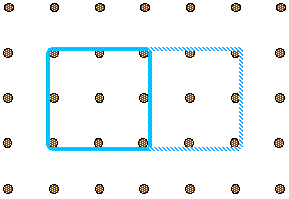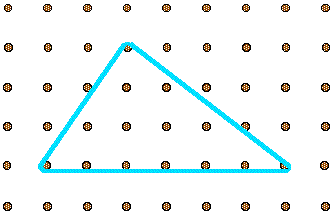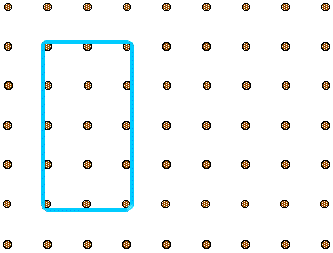Copyright © University of Cambridge. All rights reserved.
'Transformations on a Pegboard' printed from https://nrich.maths.org/
Show menu
Why do this problem?
This problem is a good way of consolidating properties of shapes and visualising changes in their properties. The interactive enables learners to satisfy their curiosity and try out ideas, when at first the task might seem very challenging.Possible approach
You could introduce this problem by giving pegboards and elastic bands to pairs of children. If they have not used pegboards recently a few minutes of free play helps concentration later! Alternatively, learners could use the interactive virtual geoboard to explore the challenges given. If you have an interactive whiteboard, using the virtual geoboard would be a good way
to share ideas with the whole class during the lesson.
Children will discover that there is more than one way to do the first part of the problem. How many ways can they find? You could talk about how they know they have got them all - perhaps by looking at each vertex in turn in a systematic way. The problem will encourage children to think hard about what makes a triangle a right-angled one. You could ask them to investigate the other changes
that occur when the length of sides of the rectangle are doubled (for example, what about the area?).
Learners could draw their answers on square dotty paper or write instructions in words (which is much harder!).
Key questions
Which pegs have you tried to move?
Can you make the shape by moving any other pegs instead?
Are there any other ways to do it?


